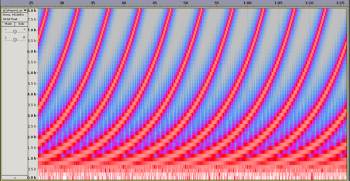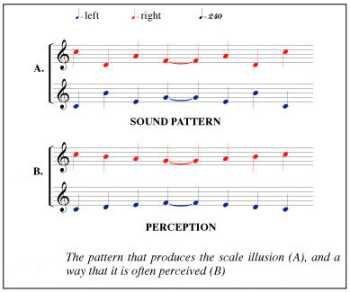Auditory Illusions
An auditory illusion is an illusion of hearing, the aural equivalent of an optical illusion: the listener hears either sounds which are not present in the stimulus, or "impossible" sounds. In short, auditory illusions highlight areas where the human ear and brain, as organic, makeshift tools, differ from perfect audio receptors (for better or for worse).

A Shepard tone is a sound consisting of a superposition of sine waves separated by octaves. When played with the base pitch of the tone moving upward or downward, it is referred to as the Shepard scale. This creates the auditory illusion of a tone that continually ascends or descends in pitch, yet which ultimately seems to get no higher or lower.

To experience the binaural beats perception, it is best to listen with headphones on moderate to weak volume, but not loud. Note that the sound appears to pulsate. Now remove one earphone. Note that the pulsations disappear completely. Repeat with your other ear. The illusion is the perception of a pulsating beat, but it is acutally just to slightly different tones being played in the left and right channels.

Discovered by Diana Deutsch in 1973, Deutsch's "scale illusion" is an auditory illusion in which principles of grouping by frequency proximity and spatial location are put into conflict with each other and in which frequency proximity wins out. When listening to the illusion over headphones, most right-handers hear a melody corresponding to the higher tones as on the right and a melody corresponding to the lower tones as on the left. When the earphone positions are reversed, the higher tones continue to appear to be coming from the right and the lower tones from the left. Other people experience different illusions, such as the higher tones on the left and the lower tones on the right, or a pattern in which the sounds appear to be localized in different and changing ways.